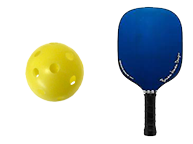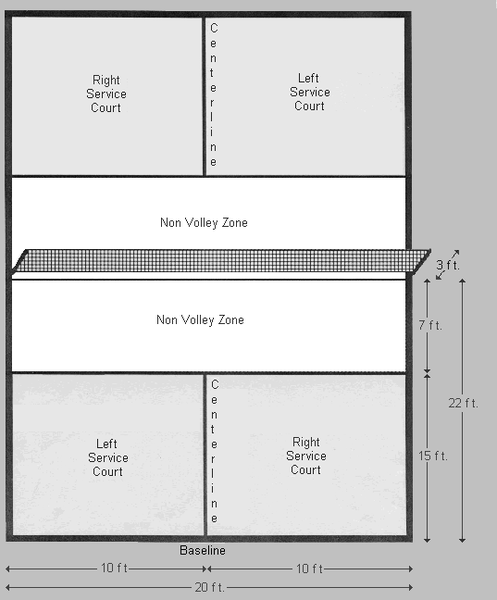Drills – Groundstrokes
When performing these drills, work on trying to have long rallies and trying to place the ball deep and near the corner of your opponent’s court. Hit the ball firmly, but do not try to hit so hard that your practice partner can’t return the ball. Give yourself enough margin of error on your shots so that you are keeping most of them inside the lines.
Drills For all Players
These drills are the easiest because you are hitting the ball back to where it came from and are doing so without being on the run. However, after doing all 4 drills you will have practiced forehands and backhands both cross court and down the line from both sides of the court. These drills can be done with two players as described, or you could do them with 4 players keeping two balls going in opposite cross court directions or opposite sidelines.
•Players practice hitting cross court balls to each other from the right side of their respective courts.
•Players practice hitting cross court balls to each other from the left side of their respective courts.
•Players practice hitting down the line on the right side of the court.
•Players practice hitting down the line on the left side of the court.
Drills For Advanced Players
These 4 drills are much more difficult and are intended for advanced players who still move fairly well on the court. They would be especially good for people trying to improve their singles game. If you have bad knees, bad ankles, bad feet, or etc, then don’t do them. Each drill gives one of the players practice on hitting while running and the other player practice in changing the direction of the ball while standing still which is harder than returning the ball back in the direction it came from. If only one player moves well, then only do the drills where he is the player to run.
•Player A stands on the right hand side of his court and alternately hits the ball down the line, cross court, down the line, cross court, etc. Player B will be running from side to side and hitting every ball right back to player A.
•Player B stands on the right hand side of his court and alternately hits the ball down the line, cross court, down the line, cross court, etc. Player A will be running from side to side and hitting every ball right back to player B.
•Player A stands on the left hand side of his court and alternately hits the ball down the line and then cross court. Player B will be running from side to side and hitting every ball right back to player A.
•Player B stands on the left hand side of his court and alternately hits the ball down the line and then cross court. Player A will be running from side to side and hitting every ball right back to player A.
Drills For Advanced Players who move well
In this drill, both players are constantly on the run and changing the ball’s direction every time they hit the ball. If you have bad knees, bad ankles, bad feet, or etc, then don’t do this one. This is only for two advanced players who both move well and are injury free. This is a great for singles players.
• Players practice at about 3/4 speed with one player hitting every ball down the line, and the other player hitting every ball cross court. Then reverse the process so that the person who hit down the line before is now hitting cross court with the other player hitting every ball down the line. Both players are running in this drill.
Drills on Changing Direction of the Ball (for 3 or 4 players)
This is a little harder than the first 4 drills because players have to change the direction of the ball, but it shouldn’t involve much movement.
•In this drill, 4 players hit the ball back and forth to each other at a speed where they can keep a long rally going. Each player should return the ball back to the other team in the direction it didn’t come from. In other words if you receive the ball down the line, then hit it back cross court. If you received the ball cross court, then hit it back down the line.
•In this drill for 3 players, 2 players on one side of the court both hit to the third player’s forehand side while that player alternately hits cross court and then down the line. After everyone has taken a turn by themselves, then do it over again but this time have the player by themselves hitting backhands cross court and down the line while the other players both hit to his backhand.
Advanced! – Changing Direction of the ball while running!
In this drill, Players should hit at about 3/4 speed so the player running from side to side has a little more time to get there. After all 3 players have taken their turn running from side to side, then start over, but this time have the player running from side to side hit down the line, and the other two players both hit cross court ever time.
•In this drill for 3 players, 2 players on one side of the court both hit down the line, while the third player on the other side of the net runs from side to side and hits every ball cross court.
Thanks,
Bob Halpin


